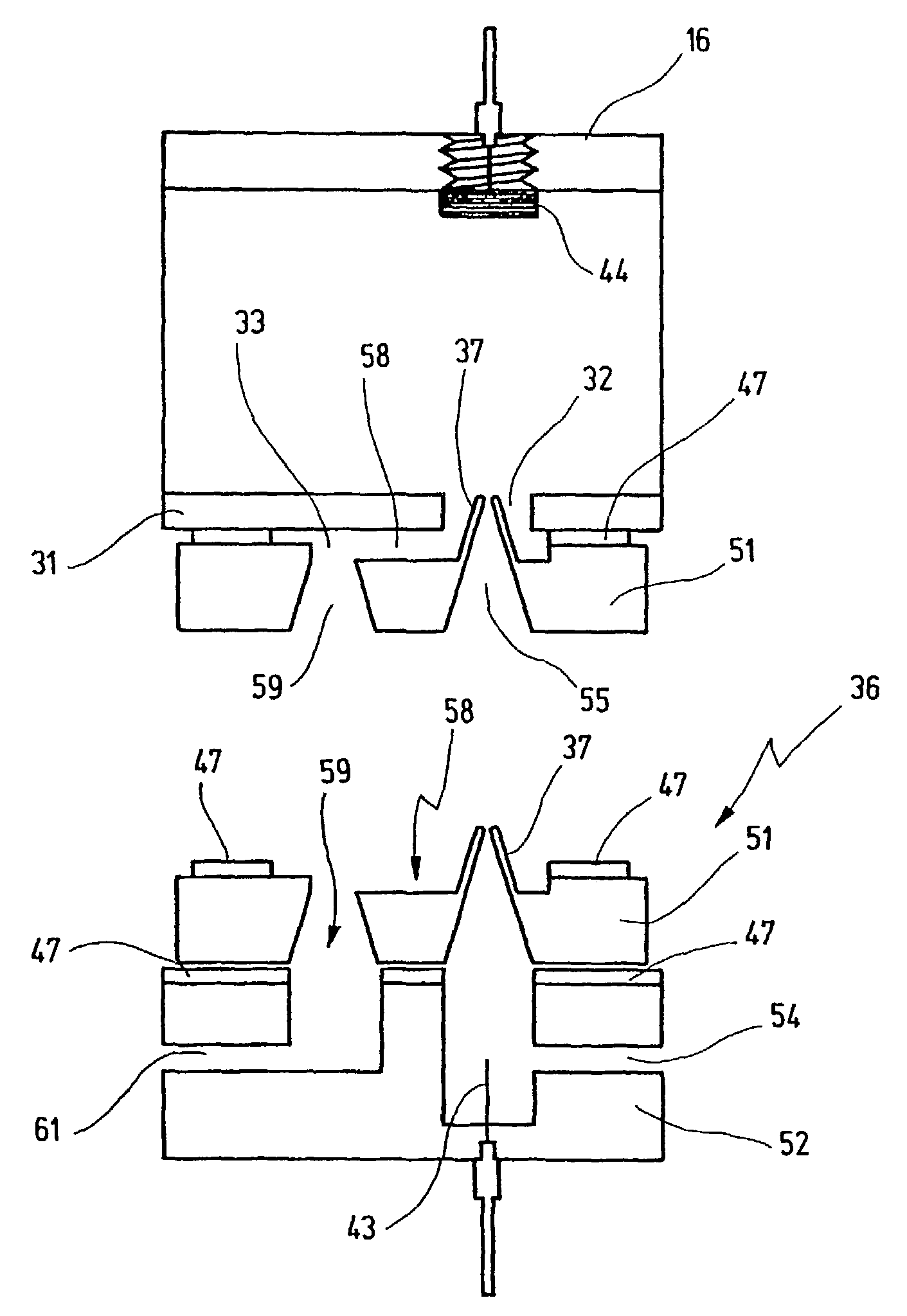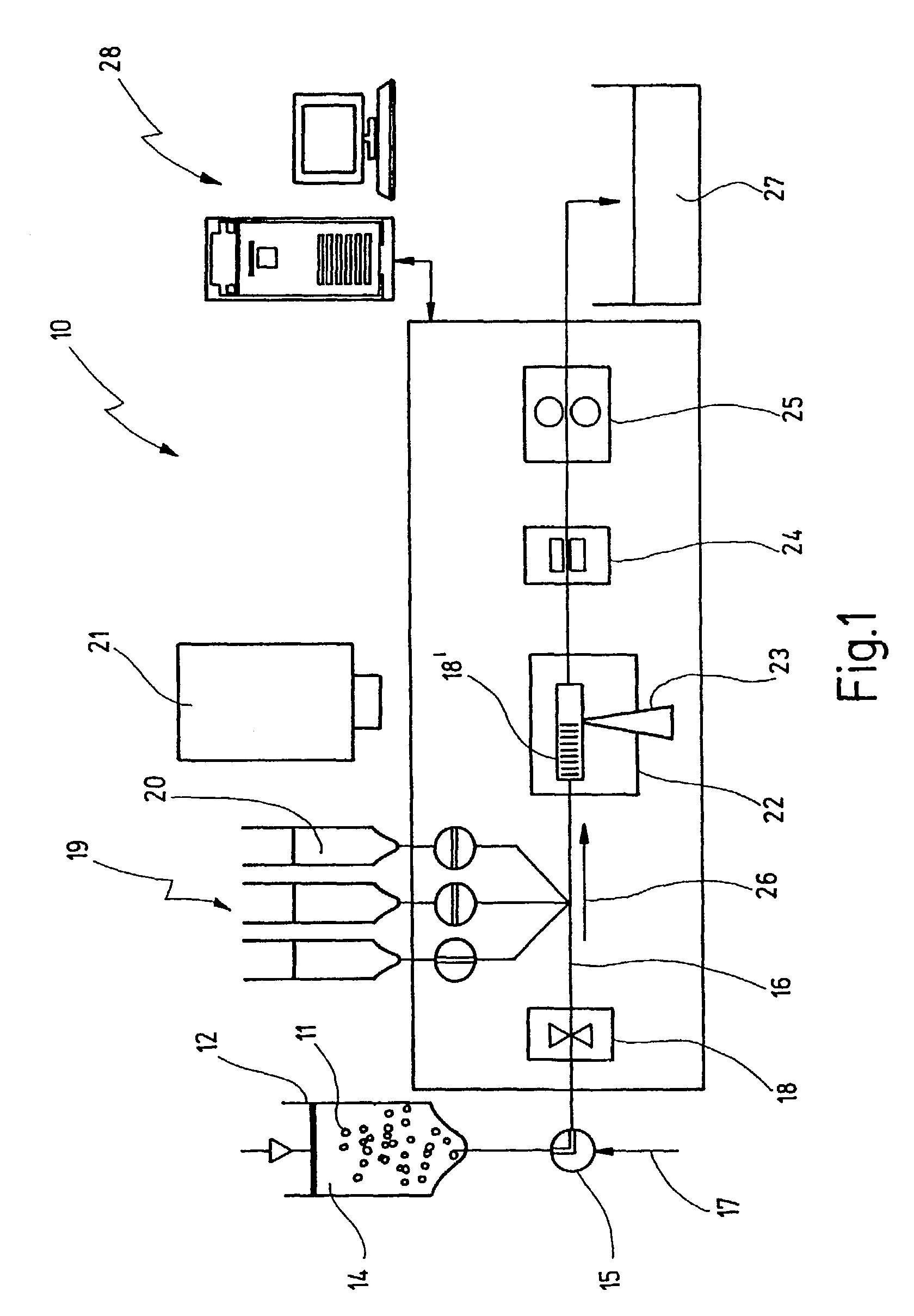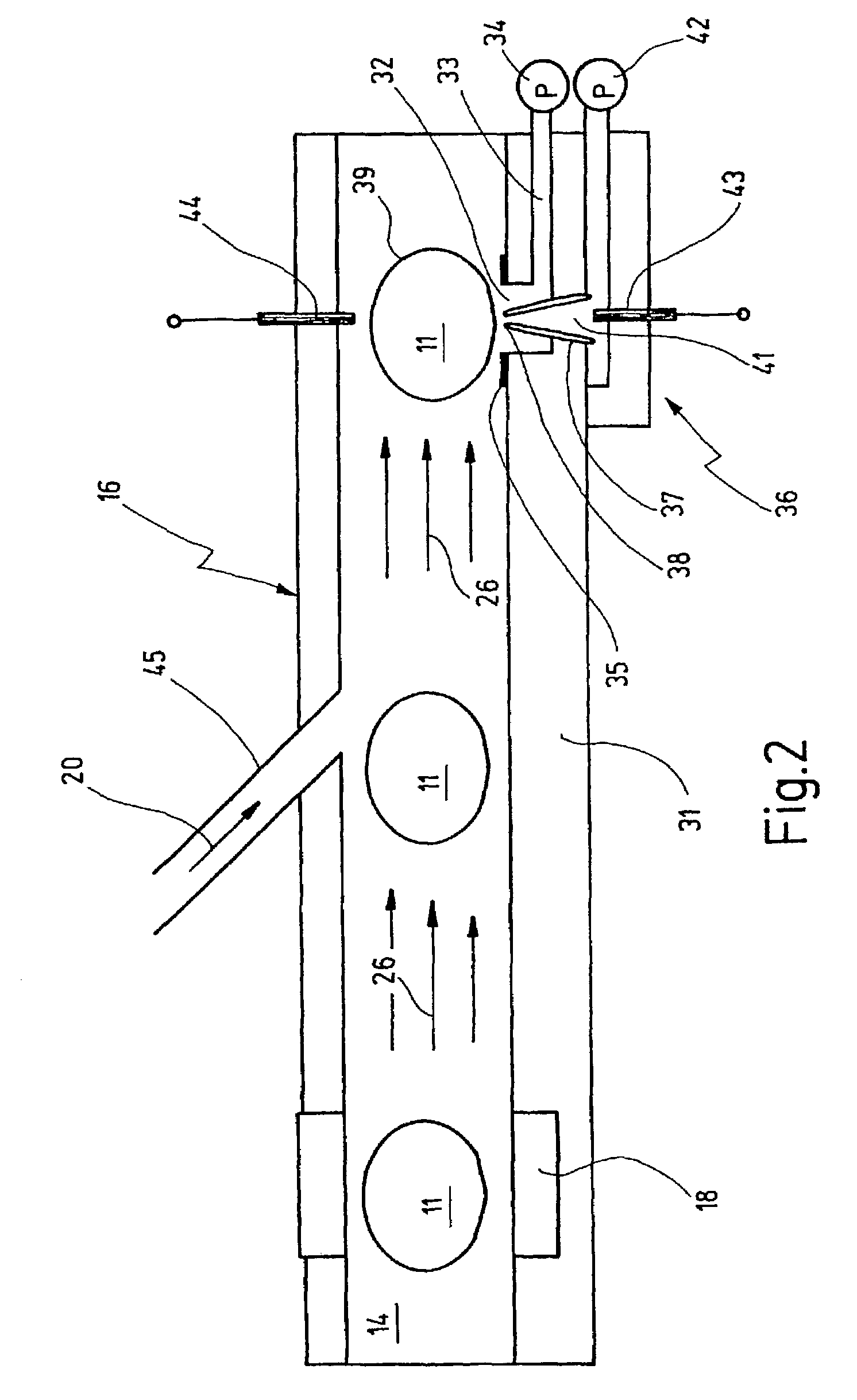Apparatus and method for electrically contacting biological cells suspended in a liquid
a technology of electrical contact and biological cells, which is applied in the direction of biochemistry apparatus, biochemistry apparatus and processes, material testing goods, etc., can solve the problems of inability to use, inability to elucidate, and limited cell or cell potential stimulation to this partial area, so as to achieve the effect of easy automation
- Summary
- Abstract
- Description
- Claims
- Application Information
AI Technical Summary
Benefits of technology
Problems solved by technology
Method used
Image
Examples
Embodiment Construction
[0087]In FIG. 1, reference number 10 indicates an apparatus for electrically contacting cells 11 which are suspended in a liquid 14 stored in a reservoir 12.
[0088]The reservoir 12 is connected with a switching valve 15 through which the liquid 14 is passed into a flow channel 16 in which the cells 11 are electrically contacted in a manner still to be described.
[0089]An inlet 17 for a washing solution is also connected to the switching valve 15 so that, after a cell 11 has been analyzed, the flow channel 16 can be flushed with said washing solution.
[0090]Alongside the flow channel 16, firstly a sensor unit 18 is arranged via which the parameters of the cells 11 are measured.
[0091]The sensor unit 18 is followed by a microperfusion unit 19 via which the perfusion solutions 20 can be introduced into the flow channel 16 in order to perfuse a contacted cell, i.e. for test substances to flow at said cell.
[0092]The microperfusion unit 19 is followed by a positioning unit 21 via which the ce...
PUM
 Login to View More
Login to View More Abstract
Description
Claims
Application Information
 Login to View More
Login to View More - R&D
- Intellectual Property
- Life Sciences
- Materials
- Tech Scout
- Unparalleled Data Quality
- Higher Quality Content
- 60% Fewer Hallucinations
Browse by: Latest US Patents, China's latest patents, Technical Efficacy Thesaurus, Application Domain, Technology Topic, Popular Technical Reports.
© 2025 PatSnap. All rights reserved.Legal|Privacy policy|Modern Slavery Act Transparency Statement|Sitemap|About US| Contact US: help@patsnap.com



